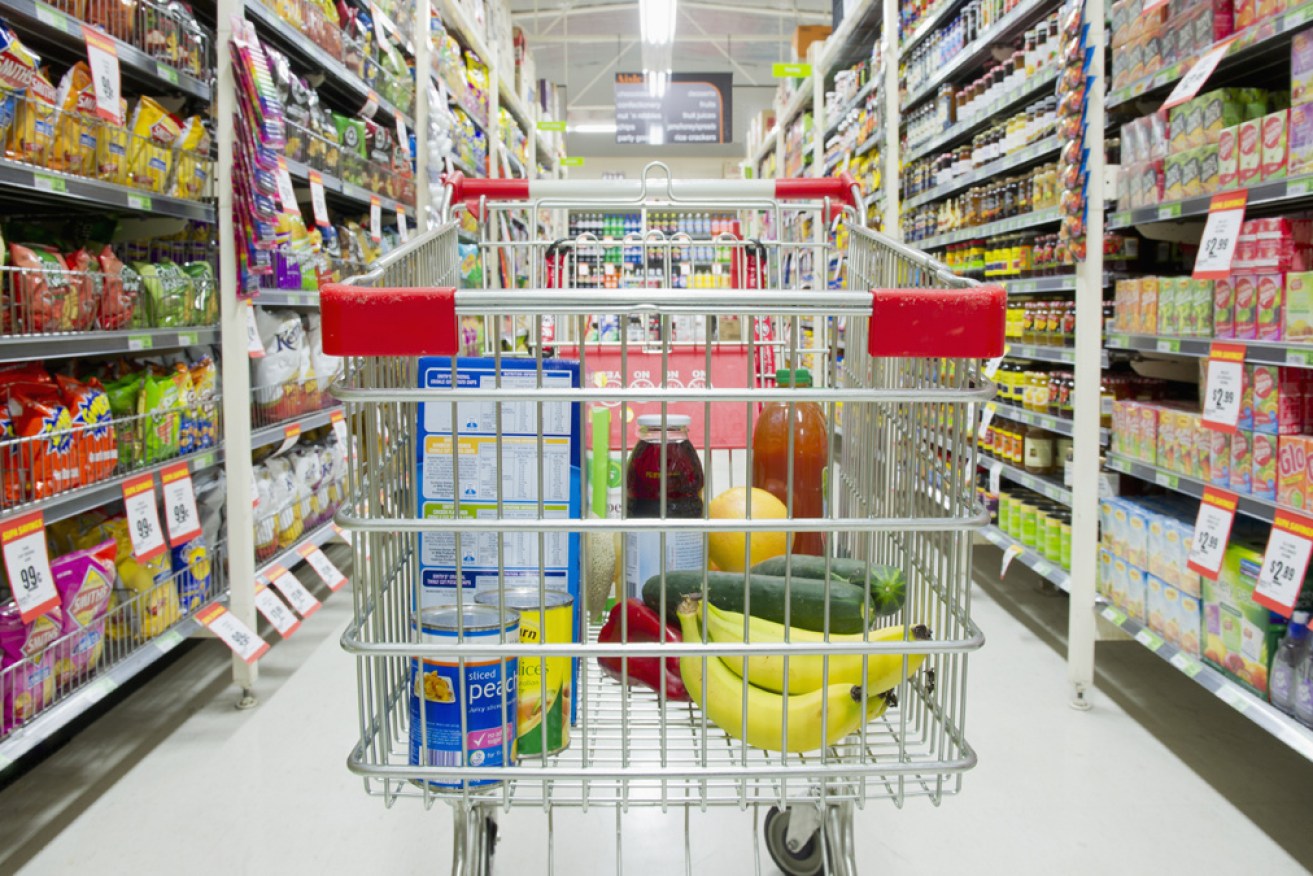Grocery shopping habits shift as more people try to save money


The contents of Australian shopping trolleys are changing and getting fewer in number. Photo: Getty
Australians struggling to keep up with the rising cost of groceries are making big changes to the way they shop.
The cost of food rose 7.9 per cent over the 12 months to April, with the brunt of the hike led by dairy and food products, thanks to rising farm-gate milk prices and high production costs for products like potato chips and edible oils, respectively.
Food products includes ingredients used to manufacture foods (like salt, gelatine, colouring, seasonings and flavourings), plus frozen pre-prepared meals and health supplements.
Fruit and vegetable was the only category that saw prices drop month on month, but the annual change is still 3.5 per cent higher.
Despite major supermarkets freezing prices for select items, shoppers have keenly felt the pressure of price rises, with almost half of Australians surveyed saying they can’t afford to fill their trolley with groceries, according to research from Suncorp Bank and OzHarvest.
In attempts to ease the increasing cost burden, four in five Australians are trying to reduce their food costs, with two in five people having already switched to cheaper brands.
Buying home brands
Although there might still be some stigma attached to home-brand products, retailers are investing millions of dollars every year to improve quality, and the dupes of popular name-brand items can help shoppers save.
For example, an 860g box of Kellogg’s Rice Bubbles costs $9.50 at Woolworths, while a 370g box of Woolworths Crispy Rice Pops costs $2.85; the difference in overall cost might amount to just 33 cents per 100g, but the savings would add up with repeat purchases and further home-brand substitutions.
The number of groceries getting thrown into trolleys is also decreasing, as data from brand-tracking platform Tracksuit shows 47 per cent of shoppers have reduced the amount they buy to cut costs.
Consulting catalogues
And Australians aren’t just making their purchasing decisions in store; two-thirds of shoppers affected by economic conditions are starting to plan their grocery shop in advance by browsing catalogues, Shopfully and Nielsen data shows.
Brendan Straw, ShopFully country manager, said shoppers planning ahead with catalogues are looking to capitalise on special offers, with brand loyalty becoming a thing of the past in favour of shopping for the best value.
“No more are Aussies hitting stores on a whim, but rather are becoming more deliberate and strategic in their approach to saving, with the catalogue being top of the list as a hack to help the weekly budget,” he said.
“As shoppers continue to feel the cost-of-living pinch, the ‘budget-conscious shopper’ has become the everyday Australian.
“Consumers who approach spending with a tactical plan having done their research to compare prices can significantly reduce their weekly grocery shop, saving upwards of $50 to $100 a week.”








